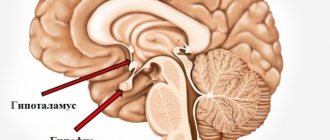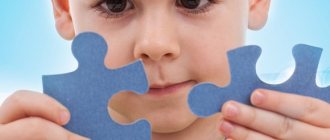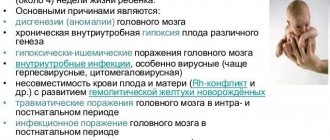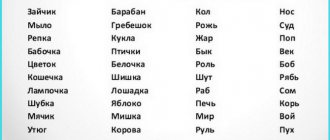Definition
An essential feature of expressive language disorder is a marked impairment in expressive language development that cannot be explained by mental retardation or inadequate learning and is not associated with pervasive developmental disorder, hearing impairment, or neurological disorder. A diagnosis should be made only if the disorder significantly interferes with success in school learning or normal daily life that requires expression in verbal (or signed) language.
The following are diagnostic criteria for developmental expressive language disorder.
- A. Scores obtained from a standardized measure of expressive language are significantly lower than scores obtained from nonverbal intellectual abilities (as measured by the Individually Administered Test 1(5).
- B. Disorder A significantly interferes with success in school and in everyday life that requires verbal (or sign) language expression. Evidence of this may include using a limited vocabulary, using only simple sentences, or using only the present tense. In less severe cases, there may be hesitations or errors in recalling some words, or errors in pronouncing long or complex sentences.
- B. Not associated with pervasive developmental disorders, hearing impairment, or neurological disorder (aphasia).
Clinical features
Severe forms of the disorder usually appear before age 3. Less severe forms may not be recognized until adolescence, when language typically becomes more complex. An essential feature of a child with expressive language disorder is a significant impairment in the development of age-appropriate expressive language, resulting in the child using verbal or signed language that is significantly below the expected level given the child's intellectual abilities. This child's understanding of language is not difficult; decoding remains relatively intact.
The disorder begins to be suspected around 18 months of age when the child does not spontaneously pronounce or even repeat certain words and sounds. Even simple words such as "mama" and "dada" are not in the child's active vocabulary, and the child uses gestures to express his desires. It is clear that the child wants to communicate, he maintains eye contact, treats his mother well, and enjoys games.
A child's vocabulary repertoire is very limited. At 18 months The child can at most understand simple commands and point to simple objects when they are named. When the child eventually begins to speak, the language deficit becomes more apparent. Articulation is usually immature. Numerous articulation errors occur, but they are not constant, especially with sounds such as r, s, z, which are either omitted or replaced by other sounds. By age 4, most children with this disorder can speak in short sentences, but they forget old words as they learn new ones. Once they start talking, they learn much more slowly than normal children. Their use of grammatical structures is significantly lower than would be expected at this age. Their developmental milestones are slightly delayed. Articulation development disorder is often observed. Developmental coordination disorder and functional enuresis in such children are often concomitant disorders.
Complications
School-aged children may develop low self-esteem, frustration and depression. Children with this disorder may also exhibit a learning disability manifested by reading delays, which can result in serious problems with academic performance. Most learning difficulties lie in the area of perceptual skills or the ability to recognize and process symbols in appropriate sequence.
Other behavioral problems and symptoms that may appear in children with expressive language disorder include hyperactivity, short attention spans, autistic behavior, thumb sucking, mood swings, accident proneness, bedwetting, and disobedience. and conduct disorder. Many children have neurological pathology. It includes mild organic disorders, decreased vestibular reactions and pathological EEG changes.
Expressive and impressive speech in speech therapy
Speech activity of children is divided into 4 independent forms:
| Forms related to expressive speech | Forms related to impressive speech |
|
|
Expressive or motor speech is the process of a growing person producing specific sounds and letters using the mouth and vocal cords or writing skills. Broca's area, located in the left hemisphere in people with a dominant right hand, or in the right hemisphere in those who carry out everyday activities with the help of their left limb, is responsible for this function in the child's body.
In the presence of pathological processes or injuries to the brain center in question, children are physically unable to clearly express their thoughts, reproduce them on paper, while clearly understanding the task and information perceived aurally. The opposite of expressive speech is impressive, or sensory.
Its essence lies in the clear awareness by the brain centers of information perceived by a person through the organs of hearing or vision.
Wernicke's area is responsible for this function. If a child, as a result of an injury or due to a genetic disorder, has dysfunction in this area of the cerebral cortex (located in the left temple area), he cannot perceive words, since he does not understand their meaning and does not even identify the emotional coloring.
At the same time, his hearing organs function normally, which, when conducting a medical examination of the health status of a growing person, can provoke a misunderstanding by the pediatrician of the reasons for the significant developmental delay of a particular young patient.
In some cases, the child’s body adapts to physical “disadvantages”, compensating for them by making other senses of perception more developed.
Course and prognosis
Overall, the prognosis for expressive language disorders is good. The speed and extent of recovery depend on the severity of the disorder, the child's motivation to participate in therapy, and the timely administration of speech and therapy interventions. 50% of children with mild expressive language disorders recover spontaneously without any signs of language impairment, but children with severe expressive language disorders may continue to show signs of mild or moderate impairment.
Treatment of speech disorders, logopathies
Speech disorders are called logopathies . They occur as a result of pathological processes affecting the peripheral, conductive or central apparatus for the perception or reproduction of speech. There are various speech diseases. Central disturbances of already formed speech (aphasia), underdevelopment or damage to the cortical apparatus of speech even in the pre-speech period (alalia, or childhood aphasia), dysarthria, delayed speech development, general underdevelopment of speech, various types of sound pronunciation disorders due to an anatomical defect or immaturity of the articulatory apparatus, neurotic and neurosis-like stuttering, as well as various disorders in mental illness. Sarklinik provides therapy for speech disorders in children and adolescents in Saratov.
Diagnosis
The quality of language, verbal or signed, is significantly below average, accompanied by low scores on standardized tests of verbal and nonverbal intelligence, indicating a diagnosis. This disorder is not due to pervasive developmental disorder because the child expresses a desire to communicate. If there are any fragments of language, they are very reduced; vocabulary is small, grammar is too simple, articulation is variable. There is internal language or adequate use of toys and household items.
To confirm the diagnosis, the child must undergo standardized expressive language and nonverbal intelligence testing. Observing the child's patterns of verbal and sign language in a variety of settings (eg, schoolyard, classroom, home, and play areas) and his interactions with other children can help determine the severity and specific areas of impairment in the child and may help in early recognition of behavioral and emotional complications.
A thorough family history should include the presence or absence of expressive language disorders in relatives. An audiogram is recommended for young children and children suspected of having hearing loss.
Differential diagnosis
With mental retardation, there is a complete impairment of intelligence, determined by a low level of intellectual tests in all areas. Nonverbal intelligence and achievement in other areas of children with expressive language disorder are within normal limits.
In receptive language disorder, language comprehension (decoding) is significantly reduced compared to the average level expected for a given age, whereas in expressive language disorder, language comprehension remains at the normal level.
In pervasive developmental disorder, in addition to the main characteristics, affected children lack internal language, symbolic or imaginary play, adequate use of gestures, or the ability to maintain warm and meaningful social relationships. In contrast, all of these characteristics are preserved in children with expressive language disorder.
Children with acquired aphasia or dysphasia showed normal language development at an earlier age, but language impairment developed after head trauma or other neurological disorders (eg, seizures).
Children with selective mutism also initially showed normal language development, and their speech was limited to communication with only one or a few surrounding family members (eg, mother, father, and siblings). Selective mutism affects girls more often than boys, and affected children are almost always shy and withdrawn outside the family.
Diagnosis differentiation
Expressive language disorder refers to several possible illnesses. They go under the code F80.1. First of all, this is the actual delay in speech development (SDD). Expressed in the absence of speech or its insufficient level.
The next thing is motor alalia. This is a serious violation that should not be confused with ZRR. It affects specific areas of the cerebral cortex and is visible on MRI. In the case of ZRD, we are talking about the immaturity of the nervous system, but it is successfully overcome and, to some extent, partially eliminates itself.
Another diagnosis that is included in this group is aphasia, that is, speech breakdown. It occurs due to stroke, head injuries and serious illnesses (tumors, meningitis). In children, this disorder is rarely detected. It can appear only closer to school age. Such a disorder will also be visible on MRI, since the cerebral cortex is affected.
It is not always easy to separate mutism from delay. This problem is characterized by normal speech development, but a complete reluctance to use it. This happens for various psychological reasons. Most often, the child agrees to communicate only with certain people, for example, with the teacher. He doesn't use the pointing gesture.
Hearing and intellectual impairments must be excluded. With these disorders, speech may be limited to simple imitation or completely absent.
Some specialists make a diagnosis of LDRD - delayed psycho-speech development. According to neurologists, such a concept does not exist. The child must have either mental development disorder or mental development delay (MDD).
Treatment
Corrective and developmental classes should begin immediately after the diagnosis of the disorder is established. Classes consist of behaviorally reinforced exercises and hands-on mastery of phonemes (blocks of sounds), vocabulary, and sentence construction. Typically, such classes are conducted by a speech therapist or speech pathologist. Psychotherapy is not usually prescribed unless a child with a language disorder shows evidence of a secondary or co-occurring behavioral or emotional disorder.
Agraphia as a separate manifestation of expressive language disorder
Agraphia is the loss of the ability to write correctly, which is accompanied by preservation of motor function of the hands. It occurs as a consequence of damage to the secondary associative fields of the cortex of the left hemisphere of the brain.
This disorder becomes concomitant with oral speech disorders and is extremely rarely observed as a separate disease. Agraphia is a sign of a certain type of aphasia. As an example, we can cite the connection between damage to the premotor area and a disorder of the unified kinetic structure of writing.
In the case of minor damage, a person suffering from agraphia may correctly write specific letters, but may misspell syllables and words. It is likely that there are inert stereotypes and a violation of the sound-letter analysis of the composition of words. Therefore, such people find it difficult to reproduce the required order of letters in words. They may repeat individual actions several times that disrupt the overall writing process.










